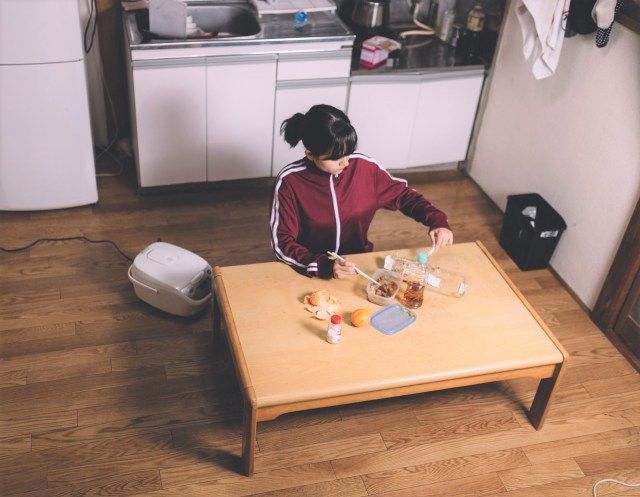
Daydreaming about getting a place in Japan’s capital? You might be able to make it a reality.
Tokyo has a well-deserved reputation as a pretty great place to live. It’s a fascinating, exciting city, with all sorts of modern entertainment, cultural activities, and historical sites. It’s also safe and clean, and boasts more professional and educational opportunities than anywhere else in the country.
Of course, Tokyo can also be an expensive place to live. But hey, maybe you don’t need a big, fancy home, since you’re planning to spend your life in the city getting out and seeing what is has to offer. So if you’re willing to live the simple life, how much will an apartment in downtown Tokyo cost you?
To answer that question, Japanese real estate agency Suumo conducted a survey of its studio apartment listings within a 15-minute walk of one of the 30 train stations on the Yamanote Line, the loop line that runs around the center of Tokyo. That puts the apartments within a doable commuting distance of just about any school or office in the downtown area, and the results show that with some proper budgeting, living the Tokyo life isn’t an impossible dream.
Let’s take a look at the average monthly rent for each station’s vicinity, starting with the most expensive and heading towards the more affordable.
30. Harajuku: 135,000 yen (US$1,300)
29. Shibuya: 128,000 yen
28. Shinbashi: 125,500 yen
27. Yurakucho: 125,000
26. Ebisu: 124,000 yen
▼ Takeshita shopping street, located right outside Harajuku Station
Not surprisingly, the highest rents were found in Harajuku and Shibuya, two of Tokyo’s most developed neighborhoods that are also immensely popular with young, fashionable Tokyoites who have the money to indulge in a fancy lifestyle but don’t need a lot of space for a family.
25. Okachimachi: 117,000 yen
24. Hamamatsucho: 116,500 yen
23. Akihabara: 114,000 yen
22. Tamachi: 113,000 yen
21. Shinjuku: 112,500 yen
▼ Shinjuku
This group includes several office districts, as even Akihabara and Shinjuku, which are best known to tourists for their shopping and nightlife options, are home to plenty of IT and financial companies. White-collar highflyers, especially those with a housing allowance built into their compensation plans, help drive up rents here.
20. Tokyo: 112,000 yen
19. Yoyogi: 111,000 yen
18. Kanda: 110,000 yen
17. Ueno: 109,500 yen
16. Meguro: 107,000 yen
▼ Kanda Shrine
Average rents start to dip as we get into the tier of locations that aren’t as in-demand as the most popular stations, but instead other Yamanote stops that are nearby. Yoyogi and Meguro, for example, sandwich the high-rent Harajuku-Shibuya-Ebisu segment of the Yamanote Line. Likewise, Ueno is next to Okachimachi, and Kanda to Akihabara, and with stops on the Yamanote Line being only three or four minutes apart, the rent savings start to look really attractive.
15. Shinagawa: 103,000 yen
13 (tie). Takanawa Gateway: 99,000 yen
13 (tie). Gotanda: 99,000 yen
12. Osaki: 96,000 yen
11. Sugamo: 91,500 yen
▼ Sugamo
Leaving the coolness tax behind cuts rents down to the five-digit range. Gotanda and Osaki are relatively quiet and overlooked neighborhoods on the south side of downtown, while Sugamo is best known for how many local shops and restaurants cater to the large number of senior citizens who live in the area.
9 (tie). Uguisudani: 91,000 yen
9 (tie). Shin Okubo: 91,000 yen
7. Ikebukuro: 89,000 yen
5 (tie). Takadanobaba: 88,000 yen
5 (tie). Komagome: 88,000 yen
4. Nippori: 86,000 yen
▼ Takadanobaba
Ikebukuro might seem like a surprising bargain this low on the average rent ranking, seeing as how the neighborhood has become a very popular entertainment destination in recent years. However, while Ikebukuro has a huge variety of shops, restaurants, theaters, and entertainment complexes that spread out to the east from the station, the west side is much quieter. Likewise even though Takadanobaba is only two stops from Shinjuku, it’s also a major student neighborhoods, with many low-cost single-occupant apartments to meet the needs of people studying at one of its many universities, specialized schools, or language academies.
1 (tie). Nishi-Nippori: 85,000 yen (US$820)
1 (tie). Tabata: 85,000 yen
1 (tie). Mejiro: 85,000 yen
▼ Mejiro
There’s a three-way tie at the most-affordable end of the rankings. Nishi-Nipori and Tabata both sit on the northern section of the Yamanote loop, which is by far the least developed. Mejiro, though, is just south of Ikebukuro, and only three stops from Shinjuku. In many ways, Mejiro feels like a quieter version of Takadanobaba (which it’s one stop north of), with some prestigious universities lending an air of sophistication to the neighborhood, but while still not being so developed as to feel rowdy or crowded.
Now before you tell your current landlord you’re moving out of your current place and start packing your bags to move to Tokyo, remember that these are average prices for studio apartments, i.e, you have one room that takes the role of your bedroom, living room, and dining space, with a small attached kitchenette and a private bathroom/shower room. As for floor space, Suumo’s survey covered apartments with between 10 and 40 square meters (108 to 431 square feet), which isn’t particularly palatial even on the top end, so if you want more space without higher costs, you might have to settle for a place farther out in the suburbs, or a boarding house. But if you’ve got your heart set on a place of your own in the heart of Tokyo, this list should give you an idea of how much to budget.
Source: PR Times
Top image: Pakutaso
Insert images: Pakutaso (1, 2), Wikipedia/Kakidai, Pakutaso (3, 4)
● Want to hear about SoraNews24’s latest articles as soon as they’re published? Follow us on Facebook and Twitter!
[ Read in Japanese ]
Follow Casey on Twitter, where he owes a lot of who he is today to the time he spent in Takadanobaba.
[ Read in Japanese ]

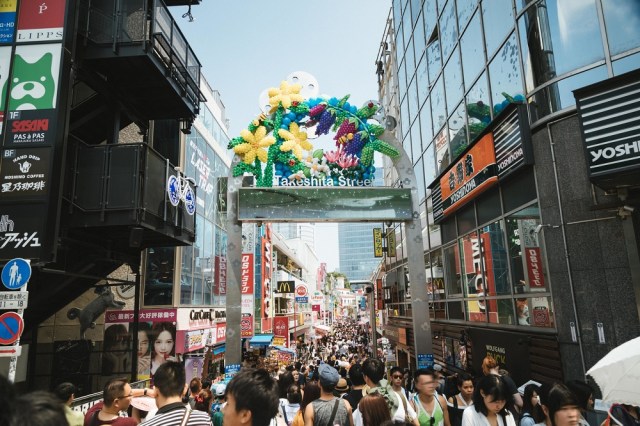
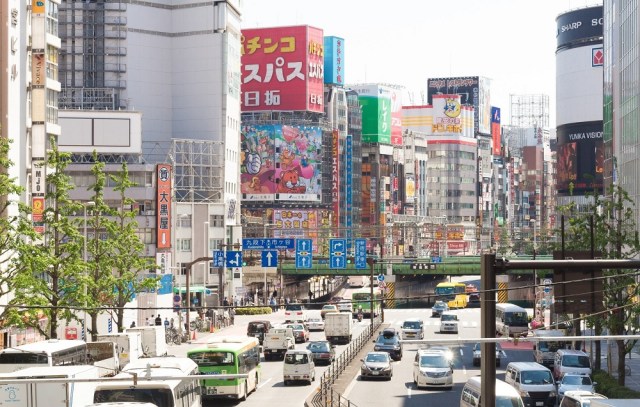
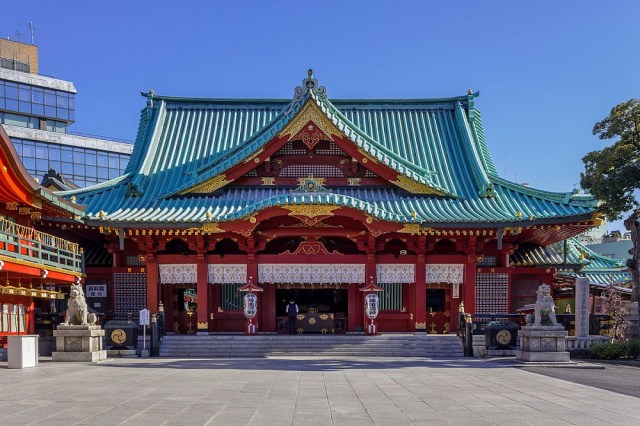
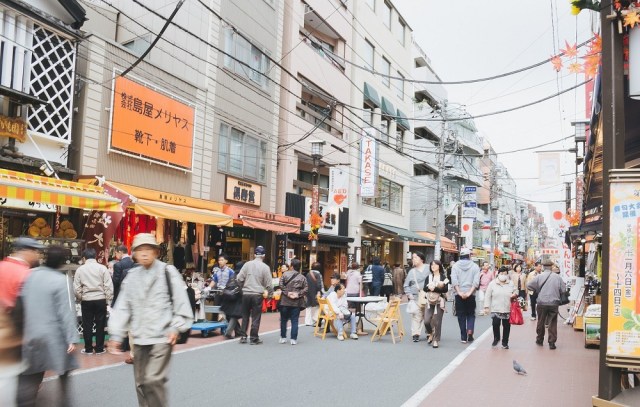
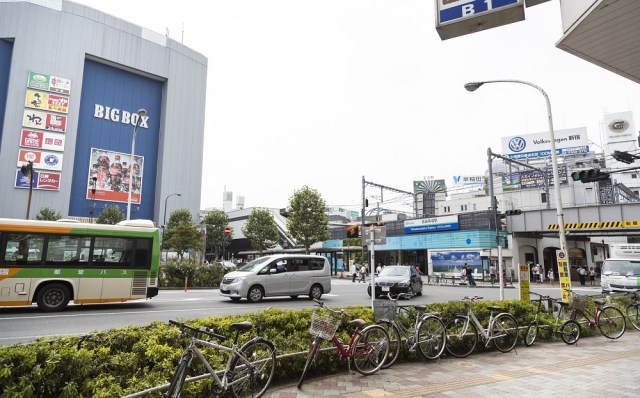
 When do Japanese women have their first kiss? Survey finds gap between different parts of Japan
When do Japanese women have their first kiss? Survey finds gap between different parts of Japan Japan’s top 10 cat names for 2017
Japan’s top 10 cat names for 2017 11 cheapest Tokyo neighborhoods to rent an apartment in show living here’s not an impossible dream
11 cheapest Tokyo neighborhoods to rent an apartment in show living here’s not an impossible dream What should Tokyo’s newest rail station be called? Poll asks high school girls for their opinion
What should Tokyo’s newest rail station be called? Poll asks high school girls for their opinion The 10 best places for young, single people to live in and around Tokyo【Survey】
The 10 best places for young, single people to live in and around Tokyo【Survey】 Foreigner’s request for help in Tokyo makes us sad for the state of society
Foreigner’s request for help in Tokyo makes us sad for the state of society Japanese city loses residents’ personal data, which was on paper being transported on a windy day
Japanese city loses residents’ personal data, which was on paper being transported on a windy day Seaside scenery, history, and so many desserts on Yokohama’s Akai Kutsu【Japan Loop Buses】
Seaside scenery, history, and so many desserts on Yokohama’s Akai Kutsu【Japan Loop Buses】 Harajuku Station’s beautiful old wooden building is set to return, with a new complex around it
Harajuku Station’s beautiful old wooden building is set to return, with a new complex around it Should you add tartar sauce to Japanese curry rice? CoCo Ichi makes diners an unusual offer
Should you add tartar sauce to Japanese curry rice? CoCo Ichi makes diners an unusual offer Starbucks Japan releases new mugs and gifts for Mother’s Day
Starbucks Japan releases new mugs and gifts for Mother’s Day Red light district sushi restaurant in Tokyo shows us just how wrong we were about it
Red light district sushi restaurant in Tokyo shows us just how wrong we were about it Smash Bros. director Sakurai stabs Kirby in the face, has delicious justification for it
Smash Bros. director Sakurai stabs Kirby in the face, has delicious justification for it To beard, or not to beard, that is the question. Here are Japanese women’s answers
To beard, or not to beard, that is the question. Here are Japanese women’s answers Akihabara pop-up shop sells goods made by Japanese prison inmates
Akihabara pop-up shop sells goods made by Japanese prison inmates McDonald’s new Happy Meals offer up cute and practical Sanrio lifestyle goods
McDonald’s new Happy Meals offer up cute and practical Sanrio lifestyle goods Japanese ramen restaurants under pressure from new yen banknotes
Japanese ramen restaurants under pressure from new yen banknotes French Fries Bread in Tokyo’s Shibuya becomes a hit on social media
French Fries Bread in Tokyo’s Shibuya becomes a hit on social media Studio Ghibli releases new action figures featuring Nausicaä of the Valley of the Wind characters
Studio Ghibli releases new action figures featuring Nausicaä of the Valley of the Wind characters New private rooms on Tokaido Shinkansen change the way we travel from Tokyo to Kyoto
New private rooms on Tokaido Shinkansen change the way we travel from Tokyo to Kyoto Tokyo Tsukiji fish market site to be redeveloped with 50,000-seat stadium, hotel, shopping center
Tokyo Tsukiji fish market site to be redeveloped with 50,000-seat stadium, hotel, shopping center Beautiful Ghibli sealing wax kits let you create accessories and elegant letter decorations【Pics】
Beautiful Ghibli sealing wax kits let you create accessories and elegant letter decorations【Pics】 Studio Ghibli releases Kiki’s Delivery Service chocolate cake pouches in Japan
Studio Ghibli releases Kiki’s Delivery Service chocolate cake pouches in Japan New definition of “Japanese whiskey” goes into effect to prevent fakes from fooling overseas buyers
New definition of “Japanese whiskey” goes into effect to prevent fakes from fooling overseas buyers Our Japanese reporter visits Costco in the U.S., finds super American and very Japanese things
Our Japanese reporter visits Costco in the U.S., finds super American and very Japanese things All-you-can-drink Starbucks and amazing views part of Tokyo’s new 170 meter-high sky lounge
All-you-can-drink Starbucks and amazing views part of Tokyo’s new 170 meter-high sky lounge More foreign tourists than ever before in history visited Japan last month
More foreign tourists than ever before in history visited Japan last month New Pokémon cakes let you eat your way through Pikachu and all the Eevee evolutions
New Pokémon cakes let you eat your way through Pikachu and all the Eevee evolutions Disney princesses get official manga makeovers for Manga Princess Cafe opening in Tokyo
Disney princesses get official manga makeovers for Manga Princess Cafe opening in Tokyo Sales of Japan’s most convenient train ticket/shopping payment cards suspended indefinitely
Sales of Japan’s most convenient train ticket/shopping payment cards suspended indefinitely Sold-out Studio Ghibli desktop humidifiers are back so Totoro can help you through the dry season
Sold-out Studio Ghibli desktop humidifiers are back so Totoro can help you through the dry season Japanese government to make first change to romanization spelling rules since the 1950s
Japanese government to make first change to romanization spelling rules since the 1950s Ghibli founders Toshio Suzuki and Hayao Miyazaki contribute to Japanese whisky Totoro label design
Ghibli founders Toshio Suzuki and Hayao Miyazaki contribute to Japanese whisky Totoro label design Doraemon found buried at sea as scene from 1993 anime becomes real life【Photos】
Doraemon found buried at sea as scene from 1993 anime becomes real life【Photos】 Tokyo’s most famous Starbucks is closed
Tokyo’s most famous Starbucks is closed One Piece characters’ nationalities revealed, but fans have mixed opinions
One Piece characters’ nationalities revealed, but fans have mixed opinions We asked a Uniqlo employee what four things we should buy and their suggestions didn’t disappoint
We asked a Uniqlo employee what four things we should buy and their suggestions didn’t disappoint Princesses, fruits, and blacksmiths: Study reveals the 30 most unusual family names in Japan
Princesses, fruits, and blacksmiths: Study reveals the 30 most unusual family names in Japan Tokyo’s busiest train line to be partially shut down this weekend as part of Shibuya renovations
Tokyo’s busiest train line to be partially shut down this weekend as part of Shibuya renovations Moving to Tokyo? Here are the three best, most reasonable neighborhoods to live in
Moving to Tokyo? Here are the three best, most reasonable neighborhoods to live in Super cheap apartment in Japan has a steamy past, free water
Super cheap apartment in Japan has a steamy past, free water How much money do you need to live in your own apartment in Japan?【Survey】
How much money do you need to live in your own apartment in Japan?【Survey】 These apartments are crazy-small even by Tokyo standards, and super-popular with young people
These apartments are crazy-small even by Tokyo standards, and super-popular with young people Top 10 areas in Japan’s capital region where women who live on their own want to live
Top 10 areas in Japan’s capital region where women who live on their own want to live Japan’s 25 most popular cat names
Japan’s 25 most popular cat names The fantastic feast of festival food in Japan
The fantastic feast of festival food in Japan Apartments with no bath or shower rising in popularity among young Tokyoites, report says
Apartments with no bath or shower rising in popularity among young Tokyoites, report says The price of newly built apartments in central Tokyo skyrocketed over 100 million yen last year
The price of newly built apartments in central Tokyo skyrocketed over 100 million yen last year What’s the best part of Tokyo to live in, and why? Survey gives the top six picks
What’s the best part of Tokyo to live in, and why? Survey gives the top six picks Japan’s most famous talking pear is getting the most “fun” café in Osaka-nassyi!
Japan’s most famous talking pear is getting the most “fun” café in Osaka-nassyi! This Tokyo apartment building uses feng shui in its design to make for very lucky living spaces
This Tokyo apartment building uses feng shui in its design to make for very lucky living spaces Crazy-cheap Japanese apartment for less than 140 bucks a month comes with headaches every day
Crazy-cheap Japanese apartment for less than 140 bucks a month comes with headaches every day New Harajuku-themed hotel room promises to surround you in pink and zany kawaii-ness
New Harajuku-themed hotel room promises to surround you in pink and zany kawaii-ness Japanese men pick their favorite Studio Ghibli anime heroine 【Survey】
Japanese men pick their favorite Studio Ghibli anime heroine 【Survey】
Leave a Reply